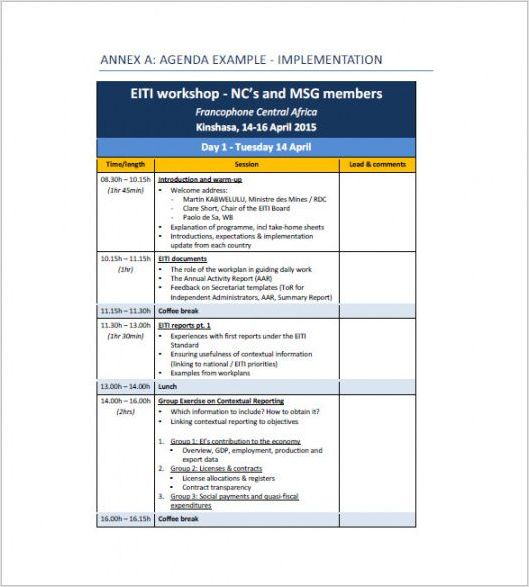Training meetings are essential for organizations to impart knowledge and skills to their employees. However, without a well-structured and organized agenda, these meetings can often become unproductive and ineffective. A training meeting agenda serves as a roadmap, outlining the topics to be covered, the time allotted for each, and the overall objectives of the session. In this article, we will explore the key elements of a training meeting agenda and provide you with a step-by-step guide on how to create one that maximizes engagement and learning.
The Importance of a Training Meeting Agenda
A training meeting agenda serves multiple purposes. Firstly, it helps the facilitator stay on track and ensures that all necessary topics are covered within the allocated time. It also helps participants understand the flow of the session, enabling them to mentally prepare and engage fully. Additionally, a well-designed agenda promotes active participation and discussion, making the training session more interactive and effective.
When creating a training meeting agenda, it is important to consider the specific needs and objectives of the session. Are you conducting a training session on a new software tool? Or perhaps you are training a team on effective communication skills. The agenda should be tailored to the specific topic and audience to achieve the desired outcomes.
Step-by-Step Guide to Creating a Training Meeting Agenda
Now that we understand the importance of a training meeting agenda, let’s dive into the step-by-step process of creating one:
1. Define the Objectives
Start by clearly defining the objectives of the training session. What do you want participants to learn or achieve by the end of the meeting? This will help you determine the content and structure of the agenda.
2. Identify the Topics
Make a list of the topics that need to be covered during the training session. Break them down into logical sections or modules to ensure a smooth flow of information.
3. Allocate Time Slots
Assign a specific time slot to each topic or module based on its importance and complexity. Be realistic about the time required for each item to avoid rushing through or skipping important information.
4. Create an Outline
Using the defined objectives and identified topics, create an outline for your agenda. Start with a brief introduction and overview of the session, followed by the main topics and their respective time slots.
5. Add Interactivity and Engagement
Consider incorporating interactive elements into your agenda to keep participants engaged. This could include group discussions, hands-on activities, or multimedia presentations. Plan these activities strategically within the agenda to break the monotony and promote active learning.
6. Include Breaks
Long training sessions can be mentally exhausting. To ensure participants stay focused and energized, include short breaks at regular intervals. These breaks provide an opportunity for participants to refresh themselves and network with their peers.
7. Provide Pre-Reading Material
To make the most of the training session, provide participants with relevant pre-reading material. This could be in the form of articles, case studies, or videos. Sharing this material in advance allows participants to familiarize themselves with the topic and come prepared with questions or insights.
8. Evaluate and Reflect
Finally, dedicate time at the end of the training session to evaluate its effectiveness. This could be in the form of a feedback survey or a group discussion. Use this feedback to improve future training meetings and address any gaps or areas for improvement.
Sample Training Meeting Agenda
- Introduction (10 minutes): Welcome participants and provide an overview of the session.
- Module 1: Introduction to Effective Communication (30 minutes)
- Discuss the importance of effective communication in the workplace.
- Explore different communication styles and their impact.
- Provide examples of effective communication techniques.
- Module 2: Active Listening Skills (40 minutes)
- Explain the concept of active listening and its benefits.
- Share practical tips for improving active listening skills.
- Conduct interactive activities to practice active listening.
- Module 3: Conflict Resolution (45 minutes)
- Discuss common sources of workplace conflicts.
- Provide strategies for constructively resolving conflicts.
- Share real-life examples and case studies.
- Module 4: Q&A and Discussion (20 minutes)
- Conclusion and Evaluation (15 minutes): Summarize the key takeaways and gather feedback from participants.
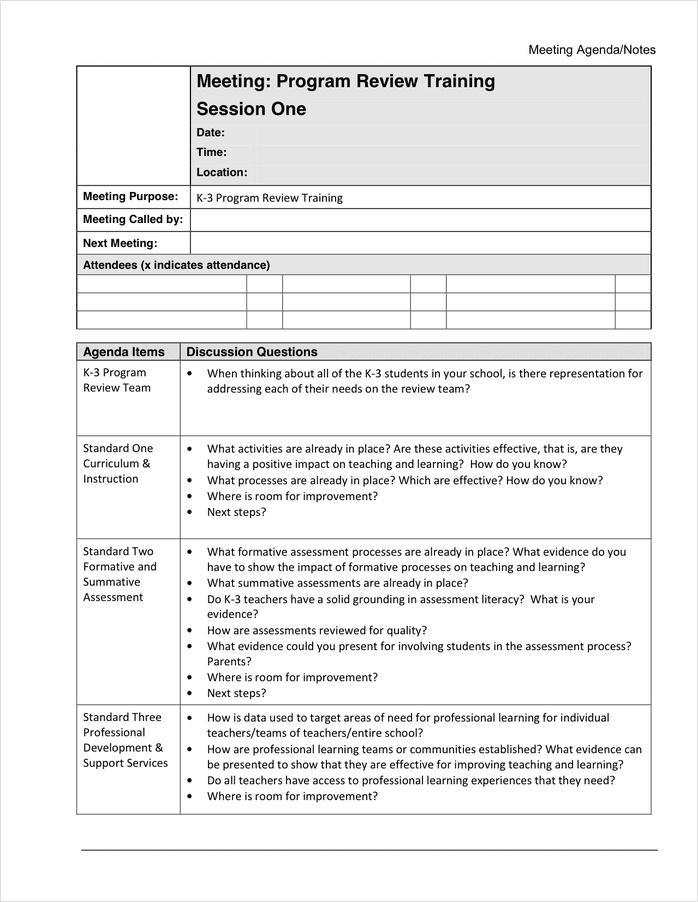
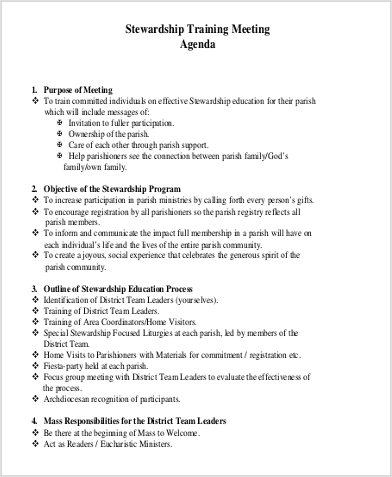
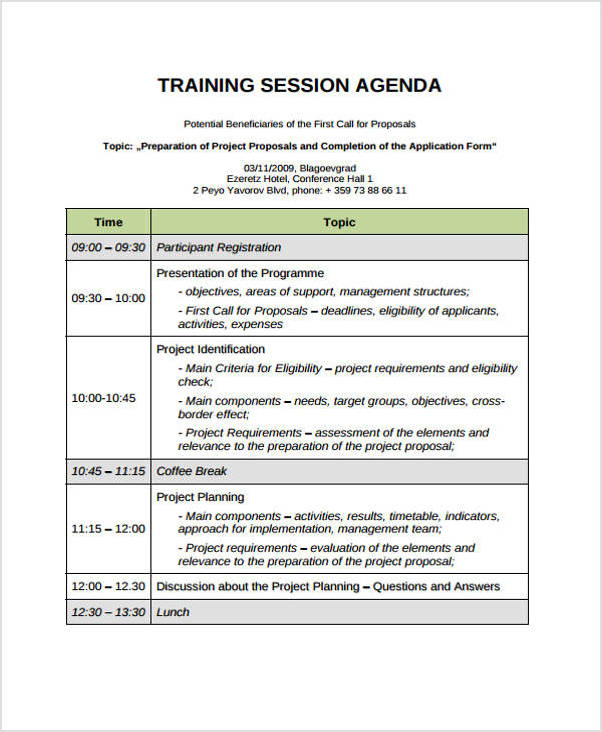
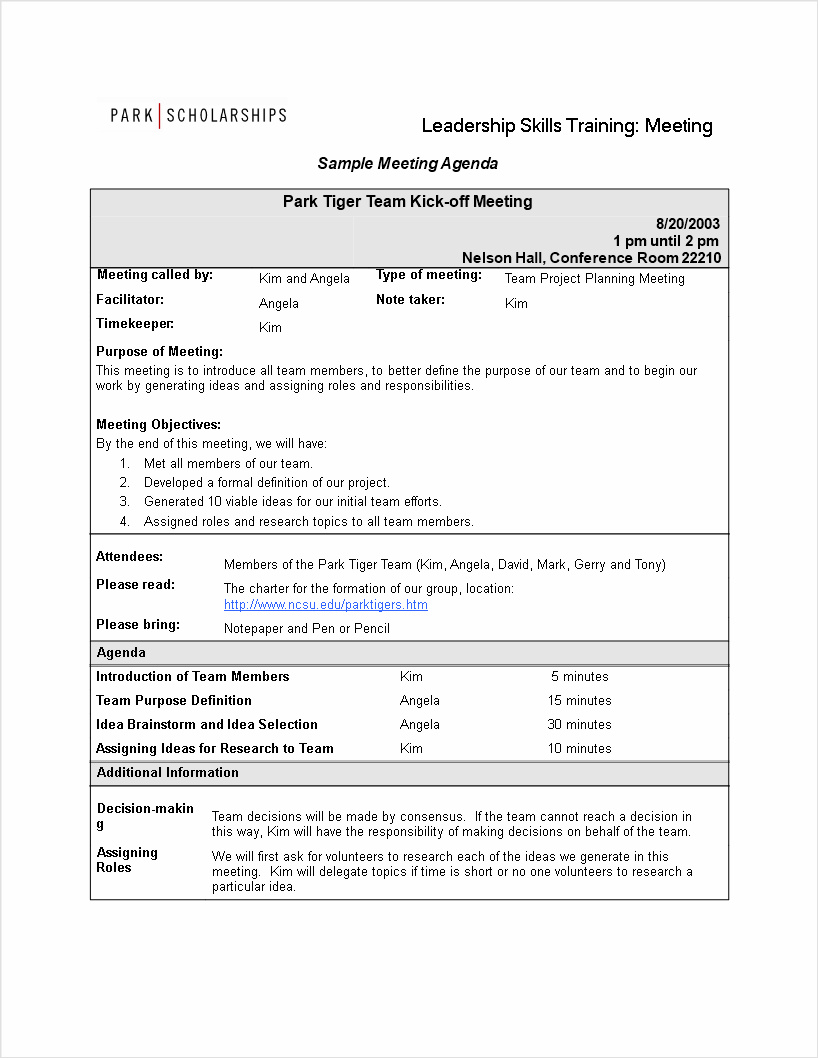
Conclusion
A well-structured training meeting agenda is crucial for the success of any training session. It ensures that the objectives are met, participants are engaged, and the session is productive. By following the step-by-step guide outlined in this article, you can create an effective training meeting agenda that maximizes learning and drives positive outcomes.
Training Meeting Agenda Template Excel – Download
